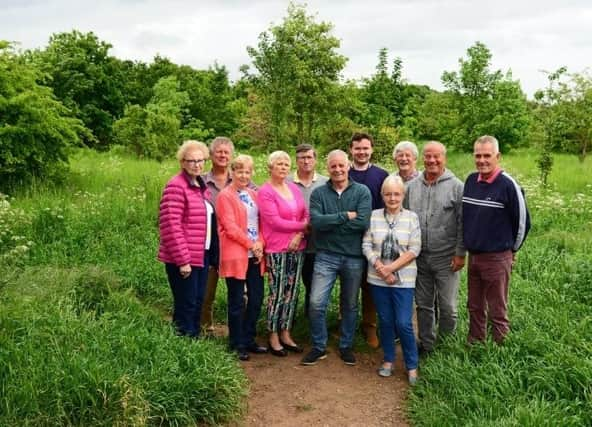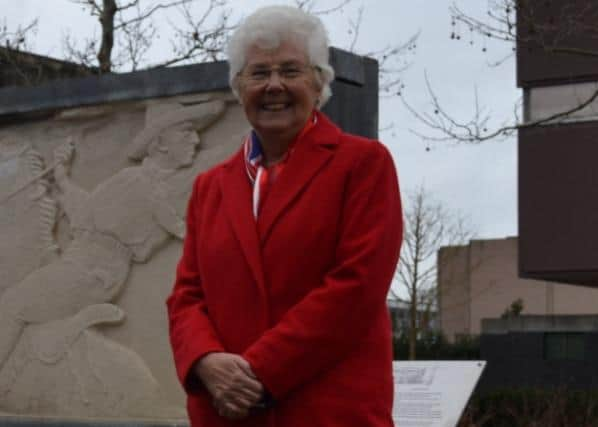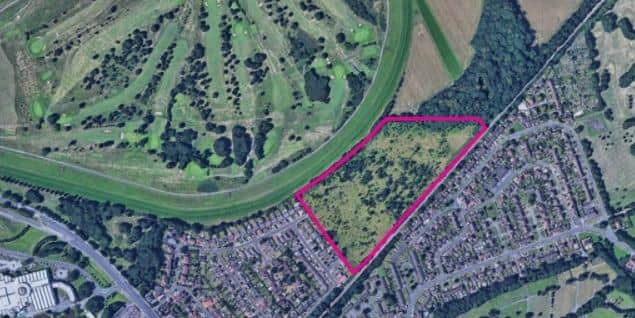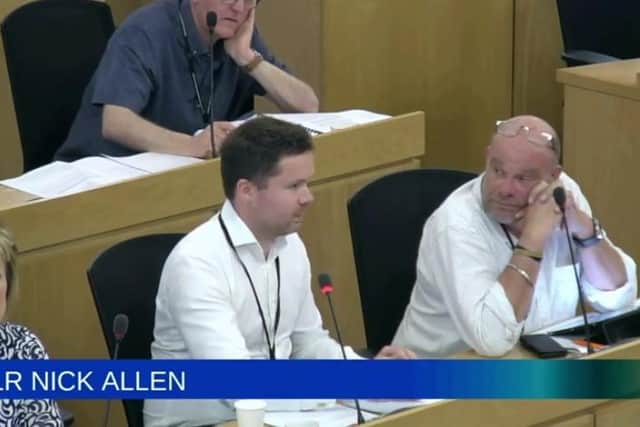Doncaster Council accused of 'greenwashing' over plan to mitigate sale of green space to housing developer


Doncaster Council bosses say they are working to progress a number of so-called ‘habitat bank’ schemes across the borough and the first one will be on land close to Rose Hill in Bessacarr.
Mayor Ros Jones said the schemes aim to be large conservation projects to create new – or restore existing – habitats in compensation for impacts from development.
Advertisement
Hide AdAdvertisement
Hide AdResidents close to the site are fighting a campaign to stop housing developer Miller Homes building hundreds of dwellings on the former farmland which was left to become open green space.


A councillor representing Rose Hill said the plan was nothing more than a ‘gimmick’ and ‘green washing’.
Bessacarr councillor Nick Allen, said if Doncaster Council cared about the matter they would ‘not have put Rose Hill up for sale in the first place’.
He also rubbished claims the council had urged Miller Homes to engage with the community over the land as they develop their proposals.
Advertisement
Hide AdAdvertisement
Hide AdAnother habitat bank scheme has already been approved at the Torne Valley, and a second, 20-hectare site, at Sandall Beat, is being planned directly adjacent to Rose Hill.


The council say this will help to protect the neighbouring wildlife site at Sandall Beat, whilst linking it to the wildlife site at Doncaster Common.
Conservative councillor Nick Allen, said: “If Doncaster Council cared sincerely about these matters they would not have put Rose Hill up for sale in the first place.
“A habitat bank is not going to be nearly enough to rebuild trust in Doncaster Council’s environment policy. The mayor must know that already.
Advertisement
Hide AdAdvertisement
Hide Ad“I am afraid this announcement is just more greenwashing from the mayor. I doubt it is sincere – look at the council’s track record on trees in my ward of Bessacarr. It’s a gimmick designed to make the council look as if it cares.


“This type of thing only works when there is a sincere commitment to putting your money where your mouth is: in this case it would mean not disposing of small green spaces such as Rose Hill.
“This type of thing only works when there is a sincere commitment to putting your money where your mouth is. In this case, it would mean not disposing of small green spaces such as Rose Hill.
“We need to see more brown site development. The council have not ‘urged’ Miller Homes to engage with the community – I urged Miller Homes to do that and I’ve met with them myself along with other ward councillors. But it was me who instigated the dialogue, not the council.
Advertisement
Hide AdAdvertisement
Hide Ad“A habitat bank scheme might work but only if local residents played a part and perhaps the council should not sell the land in the first place. I feel Doncaster Council should prioritise building on brownfield sites and leave the gimmicks to one side.
Council bosses said the schemes form part of a wider South Yorkshire initiative around ‘nature recovery’ to protect Doncaster’s existing green assets and enhance and expand these to better protect wildlife into the future.
It also forms part of Doncaster’s commitment to climate change. The schemes aim to create new or better areas of grassland, wetland, scrub and woodland to support the borough’s biodiversity and help it to become a greener place.
Mayor Ros Jones, said: “The Rose Hill site has long since been identified as potentially appropriate for housing.
Advertisement
Hide AdAdvertisement
Hide Ad“It was first highlighted in the council’s Unitary Development Plan in 1998 and has since been retained as part of the recently adopted Doncaster Local Plan following a robust consultation and examination process by a Government appointed Planning Inspector.
“This does not mean to say that development is a foregone conclusion. Any future planning application for Rose Hill must adhere to both local planning policy and Government’s planning policy requirements.
“The council’s own Local Plan sets out environmental requirements that the development would need to adhere to. Local planning policy now requires a 10 per cent net gain in biodiversity, which is something that any planning application on the Rose Hill site must deliver and something we take very seriously in considering any application.
“The Local Plan also stipulates that the Redhouse Plantation woodland to the north-eastern edge of the site will be protected with a buffer zone of planting and new public open space including children’s play space.
Advertisement
Hide AdAdvertisement
Hide Ad“Existing trees and hedgerows on the site boundary should be retained and enhanced through additional and appropriate planting, and the development layout informed by a Tree Survey.
“The railway corridor edge could also be enhanced with additional planting. Existing footpath routes and connections should be incorporated into the layout of the development. There should be sufficient separation between the new and existing properties adjacent to the site.
“Creating a Habitat Bank scheme adjacent to Rose Hill will help improve the green space provision in the area and increase tree coverage, essential measures in our local response to climate change and biodiversity.”
*
In these confusing and worrying times, local journalism is more vital than ever. Thanks to everyone who helps us ask the questions that matter by taking out a subscription or buying a paper. We stand together. Liam Hoden, editor.
Comment Guidelines
National World encourages reader discussion on our stories. User feedback, insights and back-and-forth exchanges add a rich layer of context to reporting. Please review our Community Guidelines before commenting.